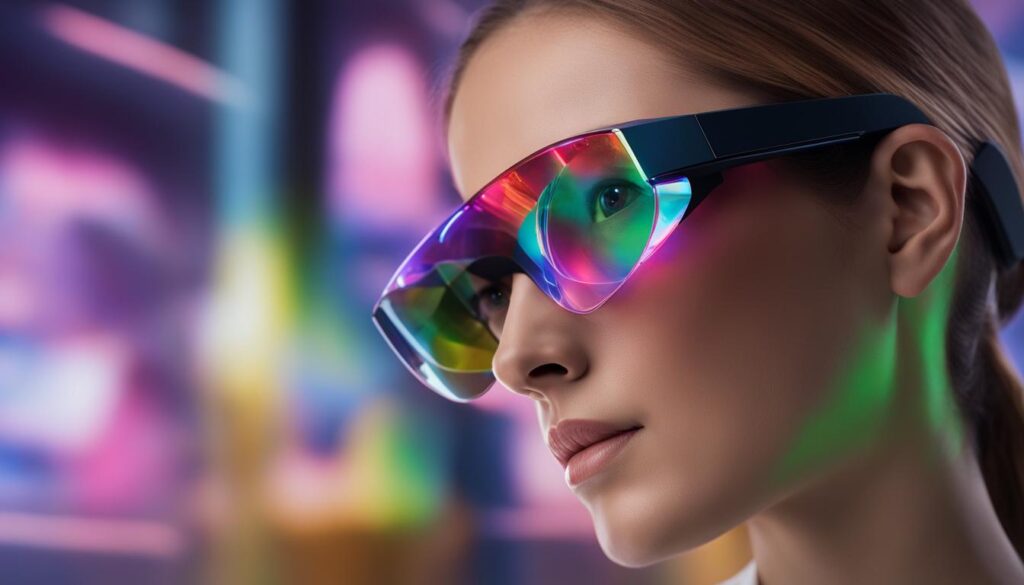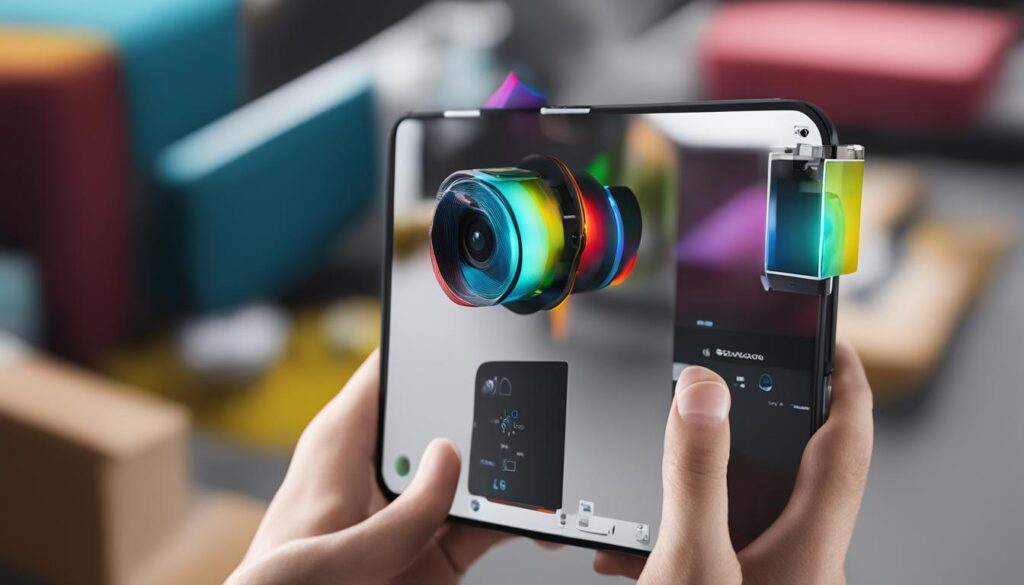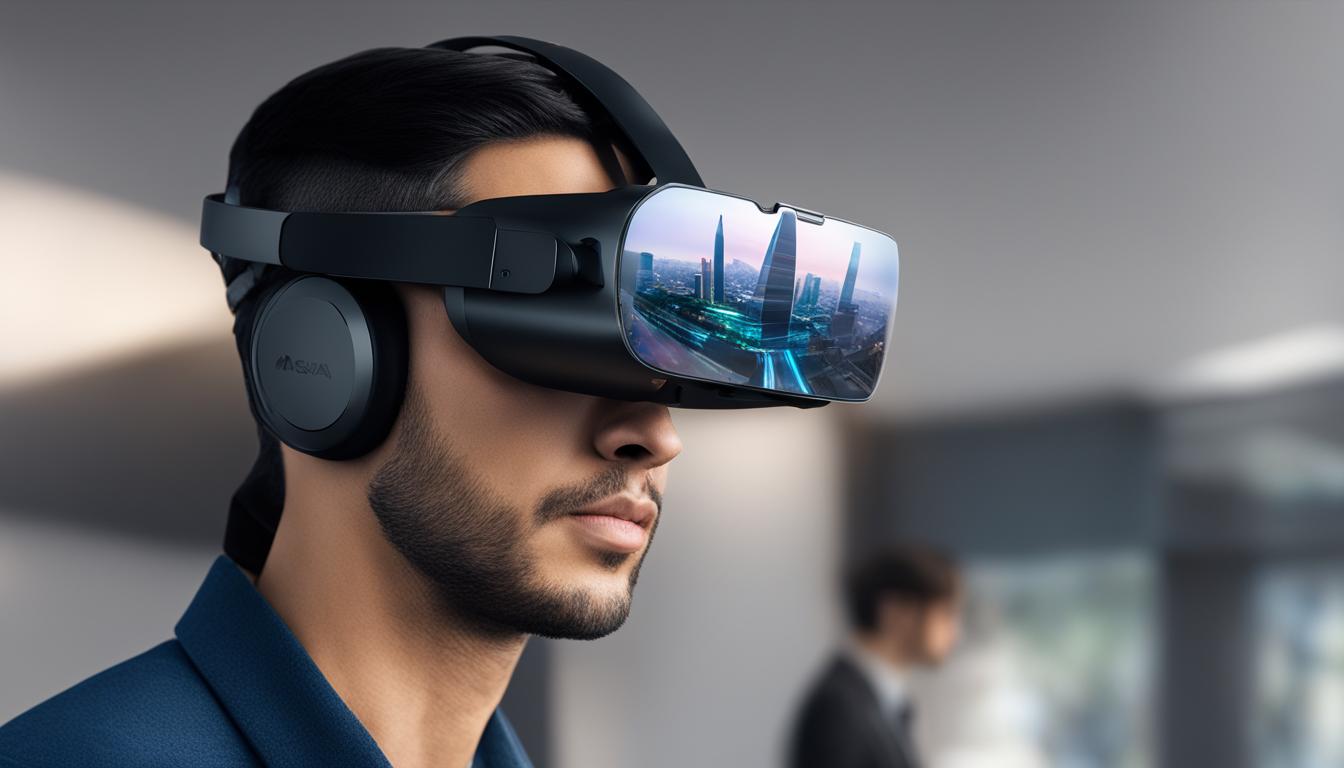Welcome to the world of augmented reality (AR), where the boundaries between the real and virtual are blurred, creating immersive experiences like never before. If you’ve ever wondered what hardware is used in augmented reality devices or what makes AR possible, you’ve come to the right place.
In this article, we’ll dive into the essential AR hardware components that form the backbone of this groundbreaking technology. From processors and displays to sensors and input devices, we’ll explore how these components work together to deliver captivating AR experiences.
But first, let’s take a moment to understand what augmented reality is all about.
Contents
- 1 Processor for AR
- 2 Display for AR
- 3 Sensors for AR
- 4 Conclusion
- 5 FAQ
- 5.1 What are the essential hardware components used in augmented reality?
- 5.2 What is the role of the processor in augmented reality?
- 5.3 What types of displays are used in augmented reality?
- 5.4 How do motion tracking sensors work in AR?
- 5.5 What other sensors are important in AR?
- 5.6 What can we expect from the future of augmented reality?
- 6 Source Links
Key Takeaways:
- AR hardware components are crucial for creating immersive AR experiences.
- The main AR hardware components include processors, displays, sensors, and input devices.
- Processors in AR devices need to be powerful to ensure real-time calculations and optimal performance.
- AR displays come in various forms, from headsets and glasses to optical and video see-through displays.
- Sensors like gyroscopes, accelerometers, and depth sensors are used to track user movement and the environment.
Now, let’s delve deeper into each of these hardware components and see how they contribute to the magic of augmented reality.
Processor for AR
In order to provide seamless augmented reality (AR) experiences, devices require a powerful processor capable of handling AR software processing and delivering high AR performance. While there is no specific processor dedicated solely to AR, certain hardware and software combinations have proven to be exceptionally proficient in this field.
One such example is Apple, which designs its hardware and software in tandem to offer the best possible AR experience. The integration between Apple’s A-series chips and iOS results in optimized performance and efficient AR software processing.
Additionally, ARM’s specialized processors are well-suited for future AR smart glasses. With their advanced capabilities, these processors enable enhanced AR performance and real-time calculations, laying the foundation for immersive AR experiences.
For Android users, Google’s ARCore is specifically designed to work seamlessly on a wide range of qualified Android devices. This ensures that AR experiences delivered through Google’s software are widely accessible and can be enjoyed by a larger user base.
Comparison of AR Processors
| Processor | Key Features |
|---|---|
| Apple A-series chips | Optimized performance and efficient AR software processing |
| ARM specialized processors | Enhanced AR performance and real-time calculations |
| Google ARCore | Wide compatibility with qualified Android devices |
Display for AR
When it comes to augmented reality (AR), the display plays a crucial role in creating immersive experiences. AR displays come in various forms, each with its own unique characteristics. Let’s explore the different display technologies used in AR.
1. Augmented Reality Headsets and Glasses
AR headsets and glasses are head-mounted devices that provide a hands-free AR experience. These devices feature built-in displays that overlay virtual content onto the real world, allowing users to interact with digital objects seamlessly. Augmented reality headsets like Microsoft HoloLens and AR glasses like Google Glass are popular examples.

2. Optical See-Through Display
Optical see-through display technology enables graphical overlay on the real world by projecting virtual content onto a transparent interface. This type of display allows users to view both the real and virtual worlds simultaneously, creating a more natural and immersive AR experience. Optical see-through glasses, such as the Magic Leap One, utilize this technology.
3. Video See-Through Display
Video see-through display technology uses cameras inside head-mounted devices to capture the real world and superimpose virtual objects onto it. This type of display provides a seamless integration of virtual content with the real environment. Devices like the Microsoft HoloLens 2 employ video see-through displays to deliver realistic and interactive AR experiences.
Each type of AR display has its own advantages and applications. Optical see-through displays are ideal for graphical overlays on the real world, while video see-through displays offer a more immersive integration of virtual objects. The choice of display technology depends on the specific requirements of the AR application.
“AR displays come in various forms, from head-mounted devices like AR headsets and glasses to optical and video see-through displays.”
| AR Display Type | Description | Example |
|---|---|---|
| Augmented Reality Headsets and Glasses | Head-mounted devices with built-in displays that overlay virtual content onto the real world. | Microsoft HoloLens, Google Glass |
| Optical See-Through Display | Displays that project virtual content onto a transparent interface, allowing users to view both the real and virtual worlds. | Magic Leap One |
| Video See-Through Display | Displays that capture the real world through cameras and superimpose virtual objects onto it. | Microsoft HoloLens 2 |
By understanding the different display technologies, developers and users can make informed decisions when choosing the most suitable AR devices for their specific needs. Whether it’s optical see-through glasses, video see-through headsets, or other AR display options, these technologies pave the way for exciting, immersive AR experiences.
Sensors for AR
Augmented reality (AR) systems rely on a diverse range of sensors that enable seamless interaction with the real world. These sensors provide crucial data on user movement, position, depth, and orientation, allowing AR devices to accurately overlay virtual content onto the physical environment.
Motion Tracking Sensors
AR systems incorporate motion tracking sensors such as gyroscopes and accelerometers to detect and track user movement. These sensors enable precise tracking of head and body movements, ensuring virtual objects align with the user’s perspective and maintain realistic interactions.
Depth Sensors
Depth sensors play a vital role in AR experiences by measuring the distance between objects in the real world. This information is used to create realistic depth perception and ensure virtual objects interact convincingly with the physical environment. Depth sensors can utilize various technologies, including structured-light sensors and time-of-flight cameras.
IMUs (Inertial Measurement Units)
IMUs provide valuable orientation data in AR systems, contributing to the seamless integration of virtual content with the real world. These units utilize a combination of accelerometers, gyroscopes, and magnetometers to measure rotational motion, acceleration, and magnetic field strength.
AR Headset Sensors
AR headsets often employ specialized imaging sensors to enhance tracking and mapping capabilities. These sensors include technologies such as time-of-flight cameras, LiDAR (Light Detection and Ranging), and structured-light sensors. By capturing precise spatial information, these sensors enable accurate registration of virtual objects onto the physical environment.
Now that you understand the importance of sensors in AR systems, let’s take a look at how they work together to create immersive augmented reality experiences.

Conclusion
Augmented reality (AR) technology is rapidly advancing, offering exciting possibilities across various industries. The integration of AR hardware components, including processors, displays, sensors, and input devices, creates immersive experiences that blend the real world with virtual content.
The synergy between hardware and software components is crucial in delivering accurate and realistic AR experiences. Artificial intelligence and AR software play a vital role in generating and rendering virtual content, enabling seamless interaction with the environment.
Looking ahead, the future of AR holds immense potential for innovation and transformation. As technology continues to evolve, we can anticipate even more groundbreaking applications in fields like gaming, education, healthcare, and architecture. Augmented reality has the power to revolutionize our interaction with the world, making it more immersive, engaging, and interactive.
As AR becomes more ubiquitous, it will reshape the way we learn, work, and entertain ourselves. From enhancing training simulations and visualizing complex data to facilitating remote collaboration and revolutionizing storytelling, AR technology opens up a new realm of possibilities. Embrace the future of AR and prepare for a world where virtual and physical realities seamlessly intertwine.
FAQ
What are the essential hardware components used in augmented reality?
The essential hardware components used in augmented reality include a processor, a display, sensors, and input devices.
What is the role of the processor in augmented reality?
The processor runs the AR software and processes data from sensors, ensuring good performance and real-time calculations.
What types of displays are used in augmented reality?
Augmented reality displays come in various forms, including head-mounted devices like AR headsets and glasses, as well as optical and video see-through displays.
How do motion tracking sensors work in AR?
Motion tracking sensors like gyroscopes and accelerometers detect user movement and position, allowing for interactive experiences in augmented reality.
What other sensors are important in AR?
AR systems rely on sensors such as depth sensors, IMUs (Inertial Measurement Units), and special imaging sensors like time-of-flight cameras, LiDAR, or structured-light sensors for accurate tracking and mapping of the environment.
What can we expect from the future of augmented reality?
Augmented reality technology is rapidly advancing, and we can expect to see even more innovative applications and immersive experiences in the future.




